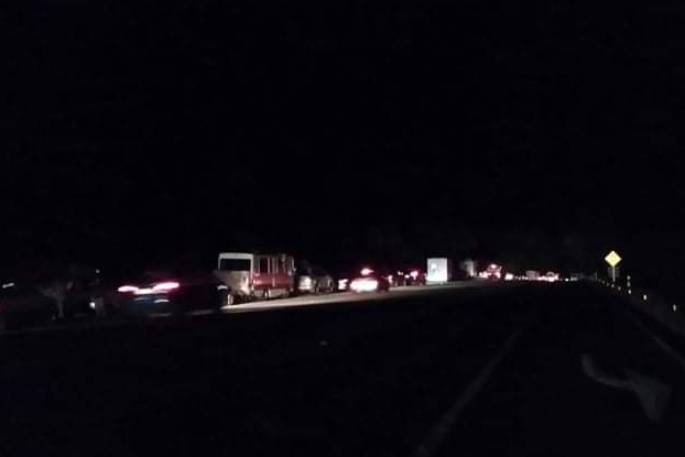A reminder of what to do in the event of a potential tsunami is being issued by the Bay of Plenty Civil Defence Emergency Management Team.
This comes on the one year anniversary of Kiwis being woken up to a strong 7.3 earthquake off the east of the North Island on Friday, March 5 last year. A strong tsunami warning was issued shortly after.
Senior advisor for Tsunami Resilience at Emergency Management Bay of Plenty, Malinda Meads is now outlining tips on how to be better prepared next time a tsunami warning is issued.
'A year ago when we had that tsunami evacuation, a number of people would have realised they weren't 100 per cent prepared,” says Malinda.
'It's human nature to say ‘oh I'll have a look one day' and just put it off.”
'We're asking people to remember what it was like a year ago and make sure they are clued up ahead of time.
'You don't want to be wasting time going online trying to find maps and your best evacuation route after an earthquake: the internet may not work, or be completely overloaded.”
Malinda's tsunami evacuation tips are as follows:
- Make a plan. Check out what plans are in place for work and schools. It may not be possible to pick up your children. Roads may be congested. There will be school plans, so understand what they are and what it means for you and your family's plan.
- Know the hazard. Be familiar with your local tsunami risk, the best evacuation routes and where your nearest safezone assembly area is.
- Information. Think about how you will get information. Check your phone can receive the emergency mobile alert, follow Civil Defence on Facebook and Twitter and listen to your local radio hosts.
- Know your safe zone. Whether you're home, work or school, know your evacuation walk and where it is safe. They key is to practice where your evacuation walk will go. If it has been a while there may be a fence or new building in the way! If you are at the coast and feel an earthquake last longer than a minute or hear unusual noise from the sea, move immediately to higher ground or go as far inland as you can.
- Know how to get there. Walk, run or cycle if at all possible to reduce the chances of getting stuck in traffic congestion. There were a lot of roads that were congested last year. Think of options that do not involve getting in a car. Walking to a safe point may be quicker and safer if you are able.
- Know when to go. Go when you get a warning. This could be feeling an earthquake, receiving an official warning, or an unofficial warning. Warnings can be found through phone alerts, the Red Cross Hazard app, social media, radio/TV, or any unofficial/informal warnings through friends, family or the internet. Don't wait for an official warning, always remember ‘long strong, get gone'.
- A getaway bag. Think about an emergency bag with food and water if there is time. Last year, people evacuated for most of the day with no or limited water. It could be sometime before other agencies can support you, so if possible take a bottle of water and some food.
Malinda also says to take your animals with you if it will not cause delay. However, you should not look for them and if you are not at home don't go back for them – chances are they have got themselves to safety anyway.
'While evacuating, avoid hazards caused by earthquake damage, especially fallen power lines,” she says.
'Do not return until you get an official all-clear message from Civil Defence.”

People evacuating from Ohope last year on Friday, March 5, 2021 Photo: Whakatane News.
Lastly, Malinda reminds the community about Covid-19 restrictions during emergencies.
'An evacuation notice overrides and Covid-19 alert level requirements,” she explains.
'Stay two meters away from others if you can and it is safe to do so. Wear a mask or face covering only if you can grab one quickly and it will not delay you leaving. Perhaps something else to consider putting in that getaway bag!”
More information on planning, safezones, and what to do following an evacuation can be found at www.bopcivildefence.govt.nz.



1 comment
TCC Reminder
Posted on 05-03-2022 10:33 | By Chookymac
After listening to the sirens going of in the Ukraine it reminds me that is what one of the Tsunami warnings should be like.Not a Bleep Bleep on a Phone
Leave a Comment
You must be logged in to make a comment.